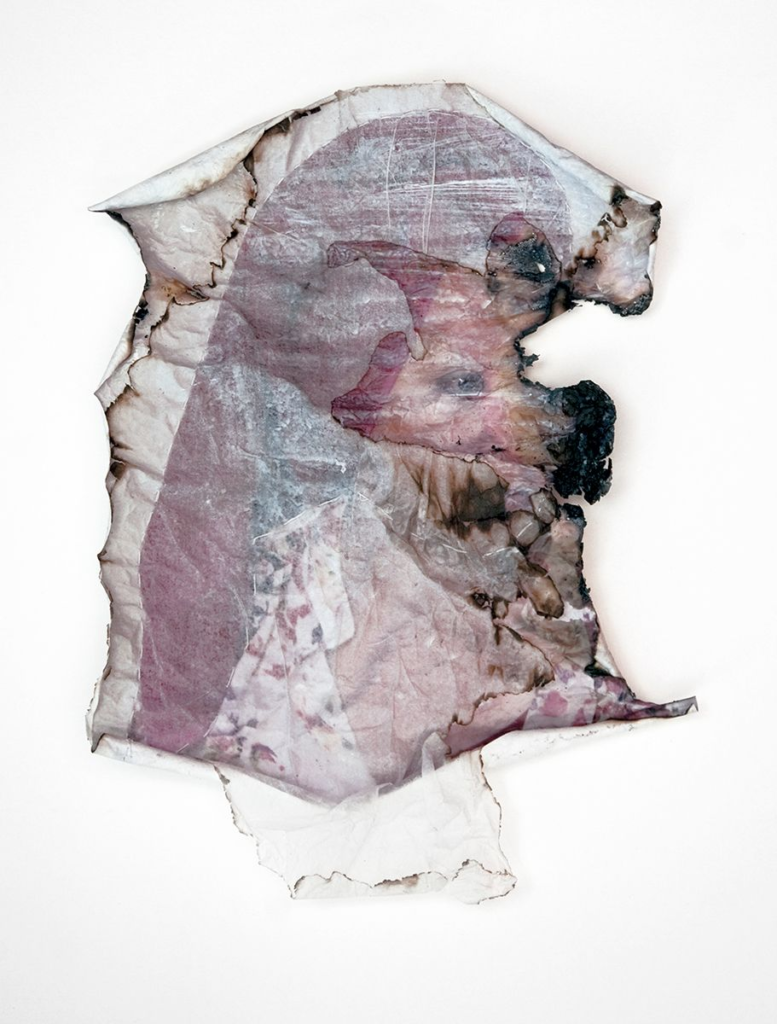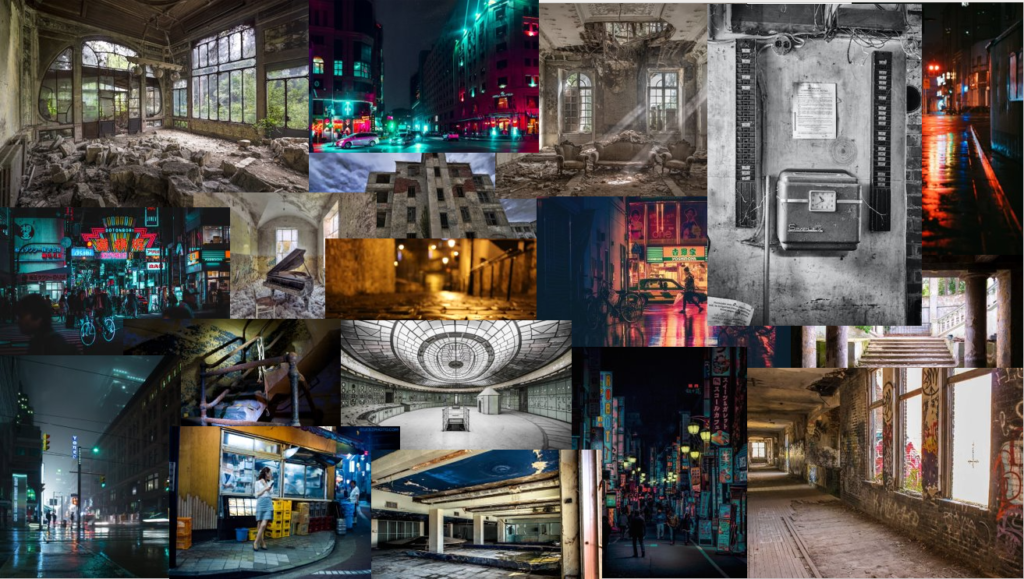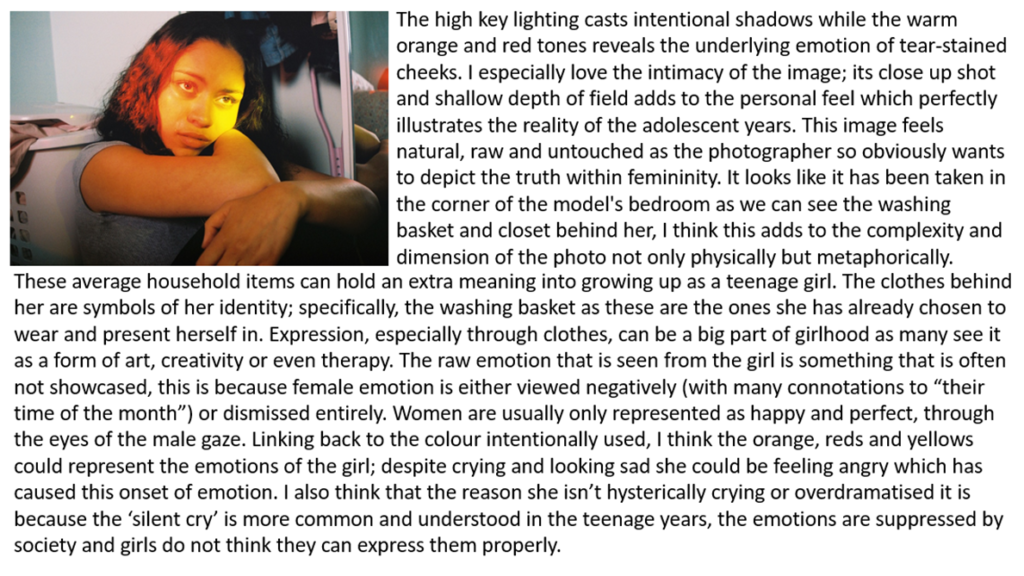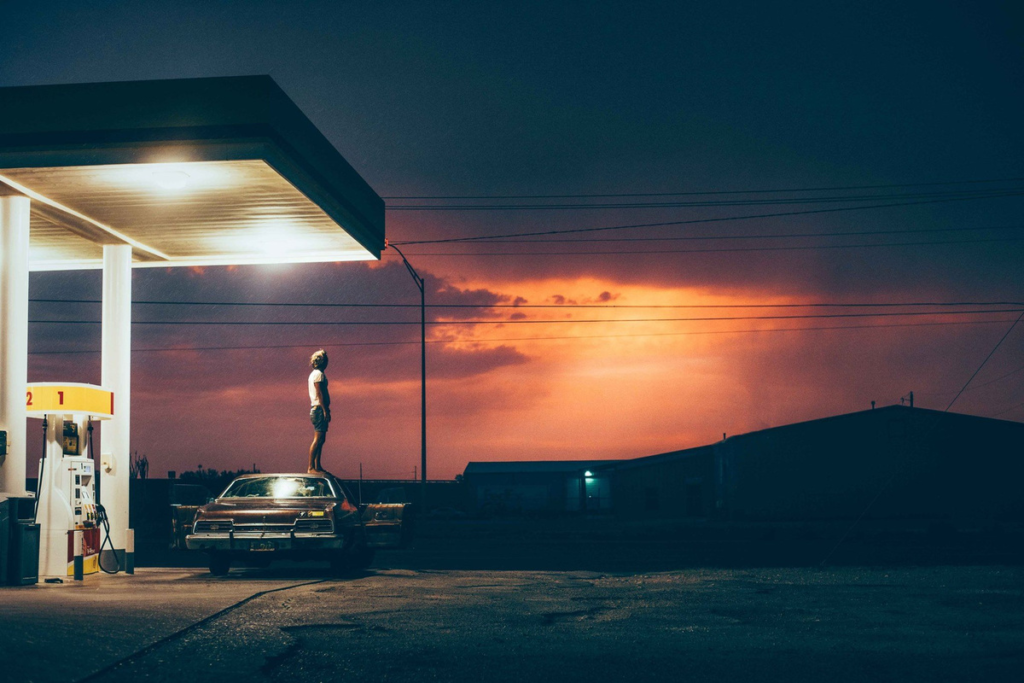
Jessa Fairbrother is a British award winning artist with a practice focussed on feelings and the body, using photography, performance, and stitch. She enitially trained as an actor in 1990s and completing an MA (Photographic Studies, University of Westminster 2010) underpins her knowledge of how artwork and audience collide. She often incorporates elements of self-portraiture and explores themes related to identity, femininity, and the body.
Fairbrother gained attention for her series titled “Body of Work,” where she used her own body as a canvas for intricate embroidery and documented the process through photography. This series has been celebrated for its innovative approach to the intersection of traditional craft and contemporary art.

However the work that is her most popular, as well as the one that intrigued me the most was “Conversations with My Mother”
she said that this specific photographic module explores the relationship she had with her mother. as she is unable to conceive she was cut of on shaping a material role that she was hoping to form.”Neither daughter nor mother”. It all started when her and her mother did a joint photographic work, where they would send back and forth a disposable camera in the post, recording both hers and her mums life from their own point of view. What changed this was that Jessa found out she was unable to conceive, and not long after that she found out her mum was dying of cancer. her mum was the second parent to get cancer and the only one still living, so Jessa decided to take the role of a “carer” and left behind her present life and joint her mum to be with her through the last moments of her life. The photographs she produced were portraits of her mother, as well as portraits of herself with her wig after her mums passing. another set of images are destroyed to represent she was destroyed inside.
Bellow is talk with Jessa, where she explains methods,processes, reasons and meaning behind the images as well as talking about the exhibition and the gallery they are stored in.
In this project she produced many outcomes with a variety of methods used. these processes enabeled the final effect of the images to not only be interesting to look at but also they show the inner meaning to why they are done is such a way.
For example the bellow images are done by using tissue and layering it on the image and gently buring each layer. Overall to achive this all she needed was a lighter to burn the edges of the photographs. as thheres a build of of layers this elevated the photographs and makes it 3D. this effect makes the photograph more interesting to look at then if it was a plain photgraph, without the alternations done to it.



Another fascinating series are the 2 portraits, one of her mum and one of her, when put next to each other they hold a massive significance. these too have been altered in another way. She has stitched into them, following a similar swirly pattern, but changing the colours of them. this once again adds more meaning to the photographs themselves as they arise questions like; what does the colour of the thread symbolise?, what does the placing of the stitched pattern symbolise?, what does the pattern of it represent?


Within the Book the layout of the images varies, but it rakes a shift when it comes to the montaged page, which is a spread across 2 pages of a collage of 14 images. the theme of them are mainly of nature, which is her mums garden, but there are also other photographs which appear older and could be of her childhood or her mums, then the biggest image being a pregnancy test, all the pictures combined in such a way create a story, in this case everything has importance, if is’s not for the viewers it is definitely for her. The pregnancy test might symbolise her infertility, where as the other pictures might be moments of her life and her mothers.


this image is one that helped me find Jessa Fairbrother, the one that caught my attention the most. At first glance, there’s nothing unusual to notice, however, once you look deeper into the image, something feels odd, you become to realise that in the centre of the image, although the colours match the surroundings, they seem in an unusual place unlike the rest of the photograph that makes sense, but that specific area doesn’t. It appears as a circle, or a sphere made out of glass in the centre of the image, but then once that catches your attention, you realise what this sphere is made out of. They are tiny flower or star like patterns made out of thread, with colours matching the surrounding shades of green, yellow and white. This is why it sort of blends in to the rest of the image, but this area is a perfect circle. Inside, not every space is filled with this textured detail. However, within that sphere in the centre there is a forearm with a hand that has a yellow glove on this gives us a clue that the surrounding textured stars are semi covering a person. Doing the research on the photograph. I now know that that person is Fairbrother’s mother, doing her gardening. Why I liked this photograph more than the rest that I saw, is because of how simple yet thought out this picture is, the colours altogether have a great harmony within the image as well as technical skills like the depth of field that is by Jessa and her camera. The significance of The circle itself might be of many meanings, a circle, as a shape can represent wholeness as it represents new beginnings, and no end, making the shape infinite. Maybe this is how Jessa wanted to capture her mother. She is to her, all she knew, and all she will know until the end of her time. It shows how important her mum was to her, but again, it also separates her mum from the physical world. In the image, the ordered circle or bubble that her mum is within, could be a metaphor of her mum being like a ghost so slowly disconnecting from the real world. This may mean why she decided to picture her mum in whiter shades of the thread. like I said before from far away, this picture doesn’t look any different than ordinary landscape pictures or pictures representing a person gardening, but it is the fact she manipulated the image and alternated it taking time into sewing each star and also thinking in how to match the colours and what shape to create with them that make this image so breathtaking.
Links
https://www.lensculture.com/articles/jessa-fairbrother-conversations-with-my-mother
https://www.tate.org.uk/research/tate-papers/33/severance-jessa-fairbrother-conversations-my-mother




























